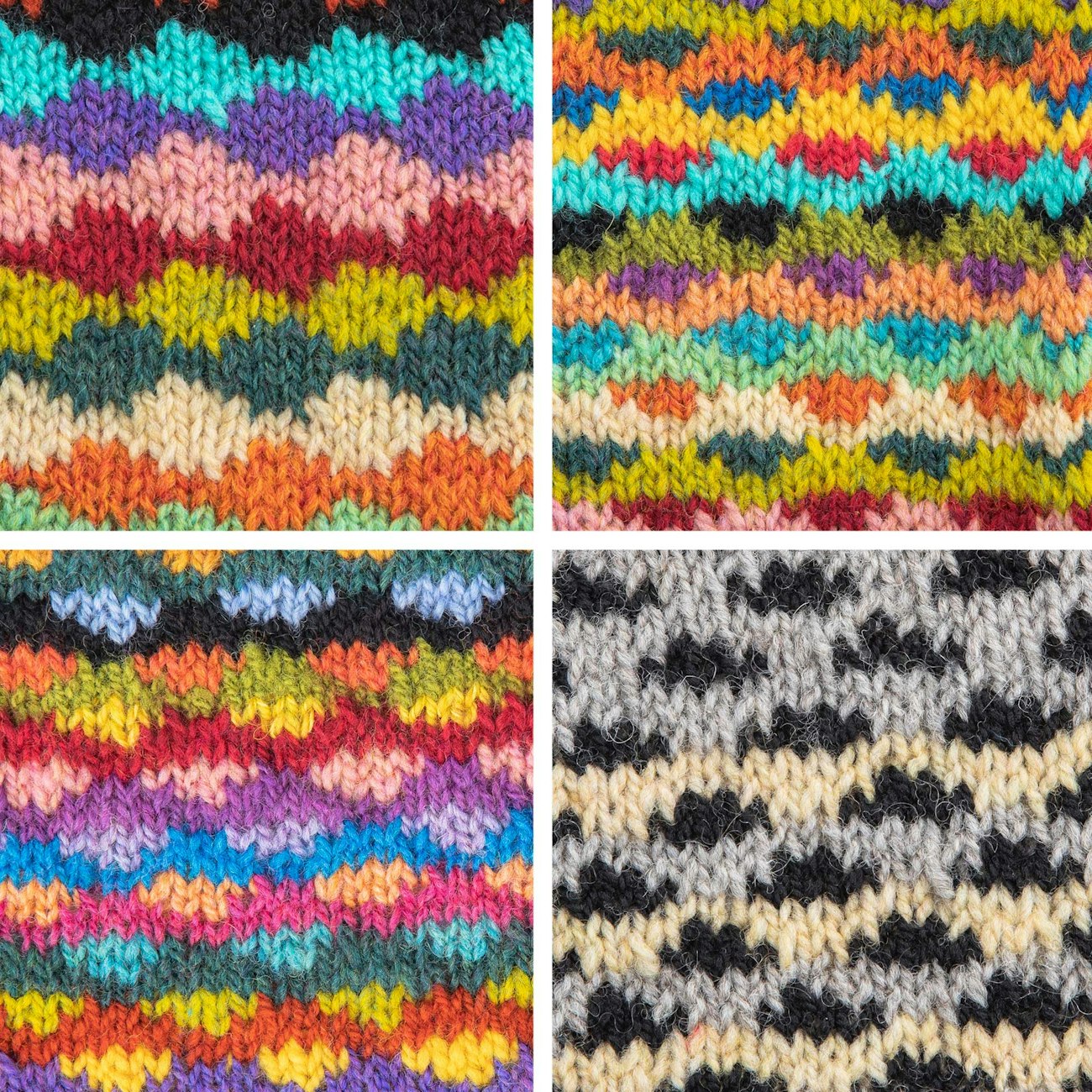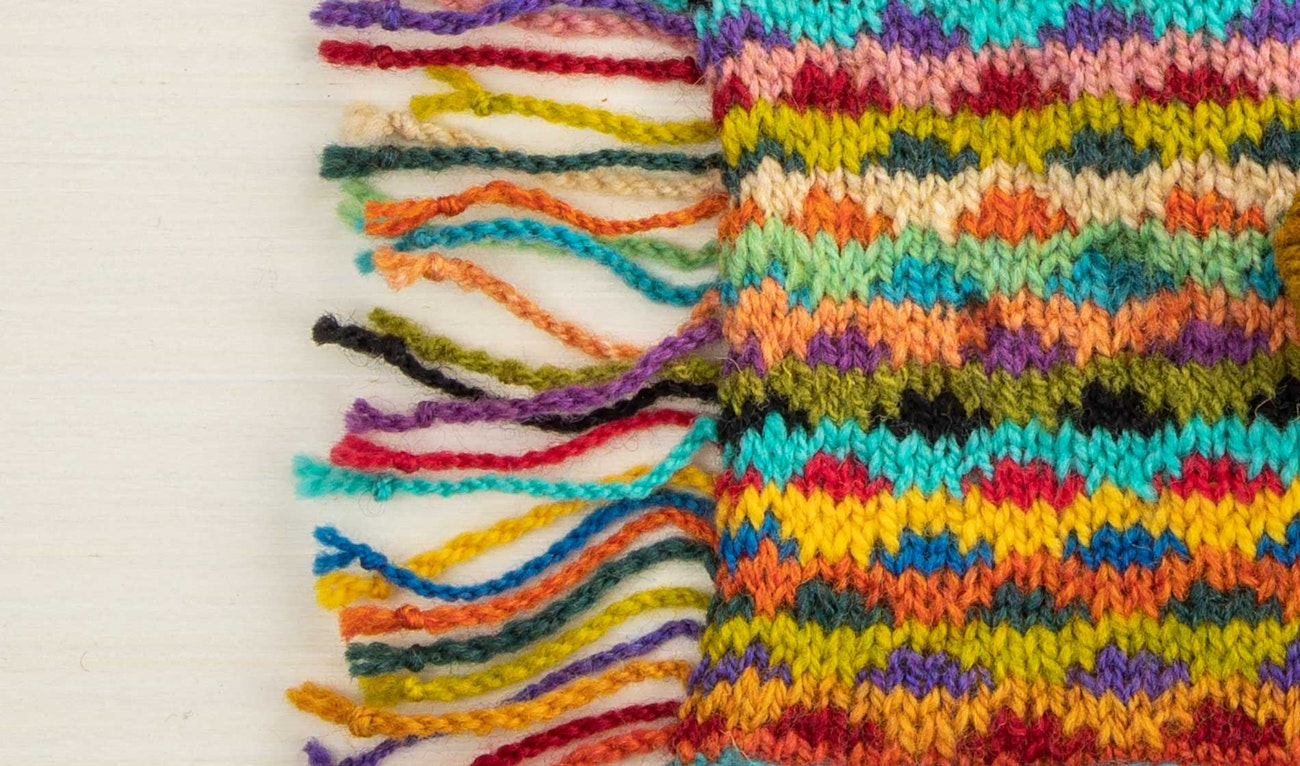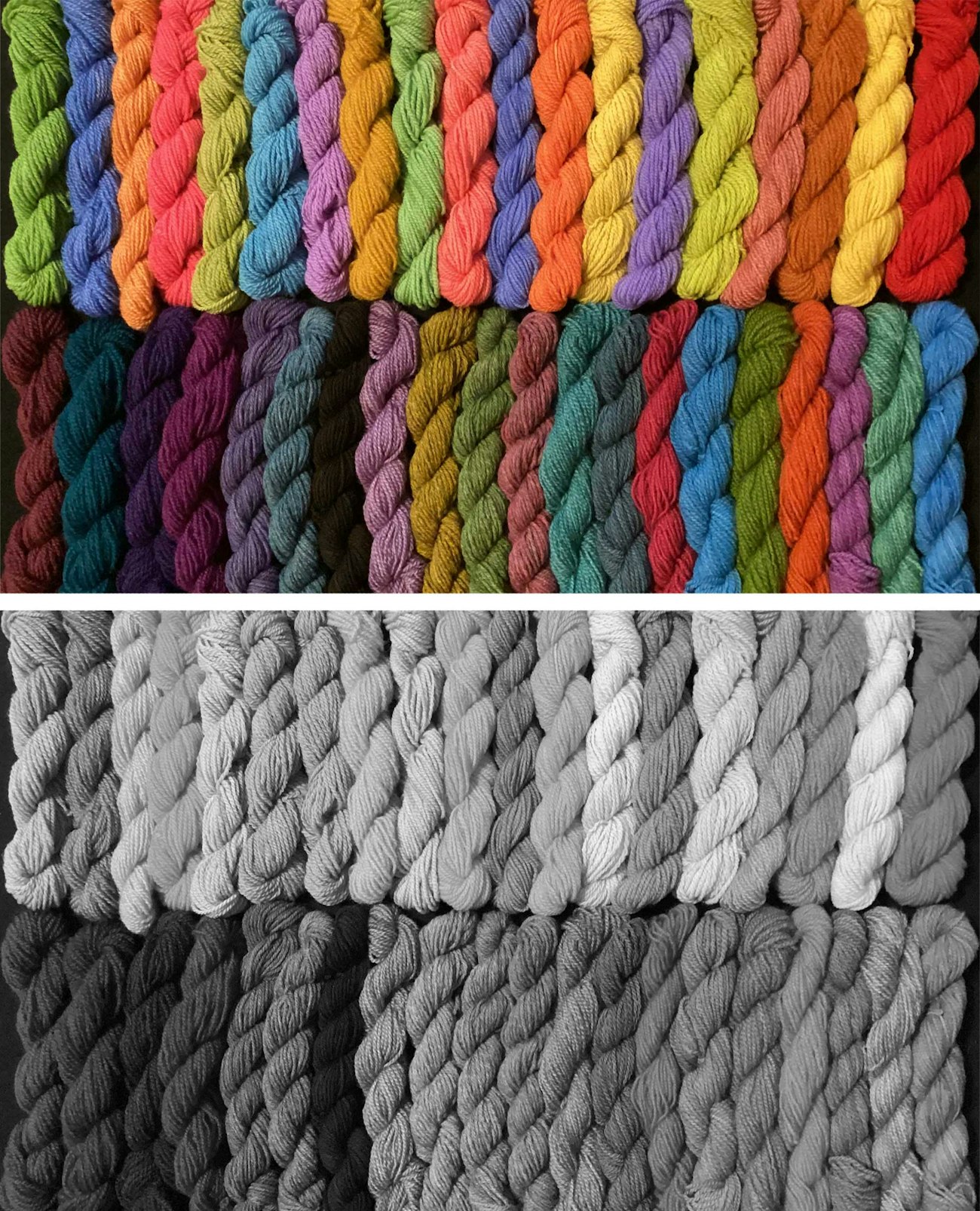Subscriber Exclusive
Scrappy Summer: Slipped-Color Exploration
Put your leftovers to good use with this surprisingly easy stitch. (Psst—It’s not stranded colorwork.)
Put your leftovers to good use with this surprisingly easy stitch. (Psst—It’s not stranded colorwork.) <a href="https://farmfiberknits.com/scrappy-summer-slipped-color-exploration/">Continue reading.</a>
https://farmfiberknits.com/cdn-cgi/image/format=auto/https://www.datocms-assets.com/101500/1750368967-douglas-slipped-color-explore.jpg?auto=format&w=900
If you’re rich in leftover scraps and odd balls of yarn, then this stitch pattern can be your payoff. It’s a bit sneaky. Even a seasoned knitter might be fooled into thinking it is worked with a stranded-knitting technique, but it derives its punch from easy slip stitches alternating with plain rows.
The Original Pattern and the Game Changer
I found this pleasant-looking pattern in The Harmony Guide to Knitting Stitches, Volume 3, and I was curious to see how it was accomplished. The instructions revealed that the color change every four rows would allow me to try color combinations (top left swatch below).
But, as a color curious knitter, could I adapt the pattern and switch every two rows instead of every four? I was more than a little surprised at the result, and I saw that it presented a huge opportunity for color experiments.
 Top row, left to right: Original four-row color pattern; adapted two-row color variation using light stripes. Bottom row, left to right: Adapted two-row color variation using dark stripes; adapted two-row color variation using neutrals.
Top row, left to right: Original four-row color pattern; adapted two-row color variation using light stripes. Bottom row, left to right: Adapted two-row color variation using dark stripes; adapted two-row color variation using neutrals.
My first rough swatch used light colors for the plain rows and dark colors for the slip-stitch rows. After that, I tried medium to dark colors for the plain rows and light colors for the slip-stitch rows. I even tried, boldly for me, all neutrals.
I expect to try other ideas such as using garter stitch for the plain rows or alternating two rows of thick with two rows of thin yarns. The versatility of this stitch makes it a great option for leftover yarns not only in a range of colors, but also texture, gauge, ply structure.
We hope you’ll give this motif a try! The pattern is included below as both a chart and row-instructions.
Tips and Tricks
All knitting stitch patterns have considerations when you apply them in different ways. This basic pattern can be adapted in so many ways to create sweaters, cowls, scarves, throws, and more.
Row Count
Like all slip-stitch patterns, this pattern is row dense. For every complete pattern repeat (eight rows), only six rows are visible in the knitting. This is important to know when you are counting for your row gauge. The good thing is that the slip-stitch rows go a bit more quickly than the knit rows.
SUBSCRIBER EXCLUSIVE
If you’re rich in leftover scraps and odd balls of yarn, then this stitch pattern can be your payoff. It’s a bit sneaky. Even a seasoned knitter might be fooled into thinking it is worked with a stranded-knitting technique, but it derives its punch from easy slip stitches alternating with plain rows.
The Original Pattern and the Game Changer
I found this pleasant-looking pattern in The Harmony Guide to Knitting Stitches, Volume 3, and I was curious to see how it was accomplished. The instructions revealed that the color change every four rows would allow me to try color combinations (top left swatch below).
But, as a color curious knitter, could I adapt the pattern and switch every two rows instead of every four? I was more than a little surprised at the result, and I saw that it presented a huge opportunity for color experiments.
 Top row, left to right: Original four-row color pattern; adapted two-row color variation using light stripes. Bottom row, left to right: Adapted two-row color variation using dark stripes; adapted two-row color variation using neutrals.
Top row, left to right: Original four-row color pattern; adapted two-row color variation using light stripes. Bottom row, left to right: Adapted two-row color variation using dark stripes; adapted two-row color variation using neutrals.
My first rough swatch used light colors for the plain rows and dark colors for the slip-stitch rows. After that, I tried medium to dark colors for the plain rows and light colors for the slip-stitch rows. I even tried, boldly for me, all neutrals.
I expect to try other ideas such as using garter stitch for the plain rows or alternating two rows of thick with two rows of thin yarns. The versatility of this stitch makes it a great option for leftover yarns not only in a range of colors, but also texture, gauge, ply structure.
We hope you’ll give this motif a try! The pattern is included below as both a chart and row-instructions.
Tips and Tricks
All knitting stitch patterns have considerations when you apply them in different ways. This basic pattern can be adapted in so many ways to create sweaters, cowls, scarves, throws, and more.
Row Count
Like all slip-stitch patterns, this pattern is row dense. For every complete pattern repeat (eight rows), only six rows are visible in the knitting. This is important to know when you are counting for your row gauge. The good thing is that the slip-stitch rows go a bit more quickly than the knit rows.
[PAYWALL]
Worked Flat
This pattern makes use of a stockinette-stitch base, so there is edge curl to manage. The horizontal edges could use the old standard of garter or seed stitches, or maybe a garter-based slip stitch.
 Susan adapted the pattern to change colors every two rows, so she used both ends of each yarn to create twisted fringe.
Susan adapted the pattern to change colors every two rows, so she used both ends of each yarn to create twisted fringe.
All Those Ends
Changing colors frequently while knitting means that there will be many ends to weave in or manage in some other way. A flat fabric such as a scarf could be worked horizontally, and all those glorious ends could be turned into twisted fringe. I used this method on some of my swatches and found that it controlled the side curl well. If the pattern is worked in the round, yarn ends could be knotted and hidden inside. Others have done it; you can, too. Also, if working circularly, consider starting each color in a different spot than the previous color. That way, the knots will be scattered throughout rather than creating a line of bulk.
 Using a gray scale image filter allows you to test the values of your color palette. Photos by Susan Z. Douglas
Using a gray scale image filter allows you to test the values of your color palette. Photos by Susan Z. Douglas
Color Musings
The more I think I understand about color, the more experience proves me wrong, but here are my thoughts anyway. Color relationships—primary, secondary, tertiary, complementary, analogous, and so on—are important. However, the interaction of dark and light colors is also important. To create contrast, it’s helpful to determine the value—lightness or darkness—of your colors. An easy way to do this is to lay out your yarn, snap a photo, and then edit the image saturation so that it appears in gray scale. If you have a black-and-white filter, this is even faster. When looking at the image in black and white, it’s easy to pick out the very dark yarns. You may be surprised, as I was, that colors thought of as dark turned out to have medium value. Some colors, such as orange, frequently surprise me.
Susan’s Swatch
Flat knitting:
Multiple of 6 plus 2. If adapting for circular knitting: Multiple of 6.
Note: For Susan’s variation, change colors on Rows 1, 3, 5, and 7.
Row 1 (RS) Knit.
Row 2 (WS) Purl.
Row 3 K1, *k1, slip 4 pwise wyib, k1; rep from * to last st, end k1.
Row 4 P1, *p2, slip 2 pwise wyif, p2; rep from * to last st, end p1.
Row 5 Knit.
Row 6 Purl.
Row 7 K1, *slip 2 pwise wyib, k2, slip 2 pwise wyib; rep from * to last st, end k1.
Row 8 P1, *slip 1 pwise wyif, p4, sl 1 pwise wyif; rep from * to last st, end p1.
Rep Rows 1–8.

For this knitting pattern (and many other colorwork patterns) to work, a palette of colors with good to very good contrast is what keeps the eyes dancing, but that limit can be stretched. It isn’t necessary to use only light and dark colors; you can use medium shades, too. The main thing is to have enough contrast in the slip-stitch rows so that they stand out
against the plain rows. Luckily, an apparent mistake in color choice can often be balanced in subsequent rows. Just keep going. The “mistake” could be the very thing that makes the piece sing and play.
Resources
Devaney, Barbara. Harmony Guide to Knitting Stitches. Vol. 3. London: Lyric Books, 1990.
 Top row, left to right: Original four-row color pattern; adapted two-row color variation using light stripes. Bottom row, left to right: Adapted two-row color variation using dark stripes; adapted two-row color variation using neutrals.
Top row, left to right: Original four-row color pattern; adapted two-row color variation using light stripes. Bottom row, left to right: Adapted two-row color variation using dark stripes; adapted two-row color variation using neutrals. 

 Susan adapted the pattern to change colors every two rows, so she used both ends of each yarn to create twisted fringe.
Susan adapted the pattern to change colors every two rows, so she used both ends of each yarn to create twisted fringe.  Using a gray scale image filter allows you to test the values of your color palette. Photos by Susan Z. Douglas
Using a gray scale image filter allows you to test the values of your color palette. Photos by Susan Z. Douglas 